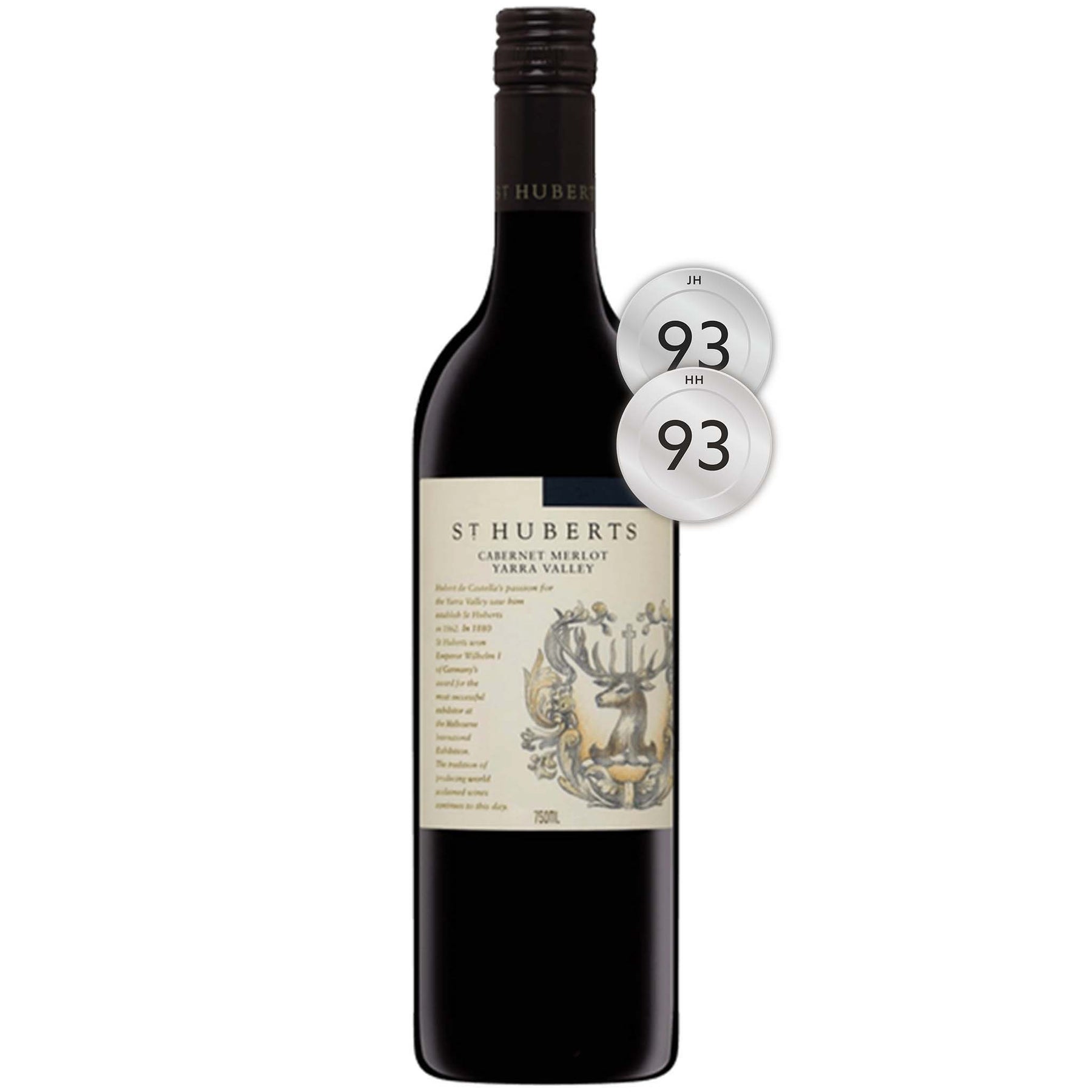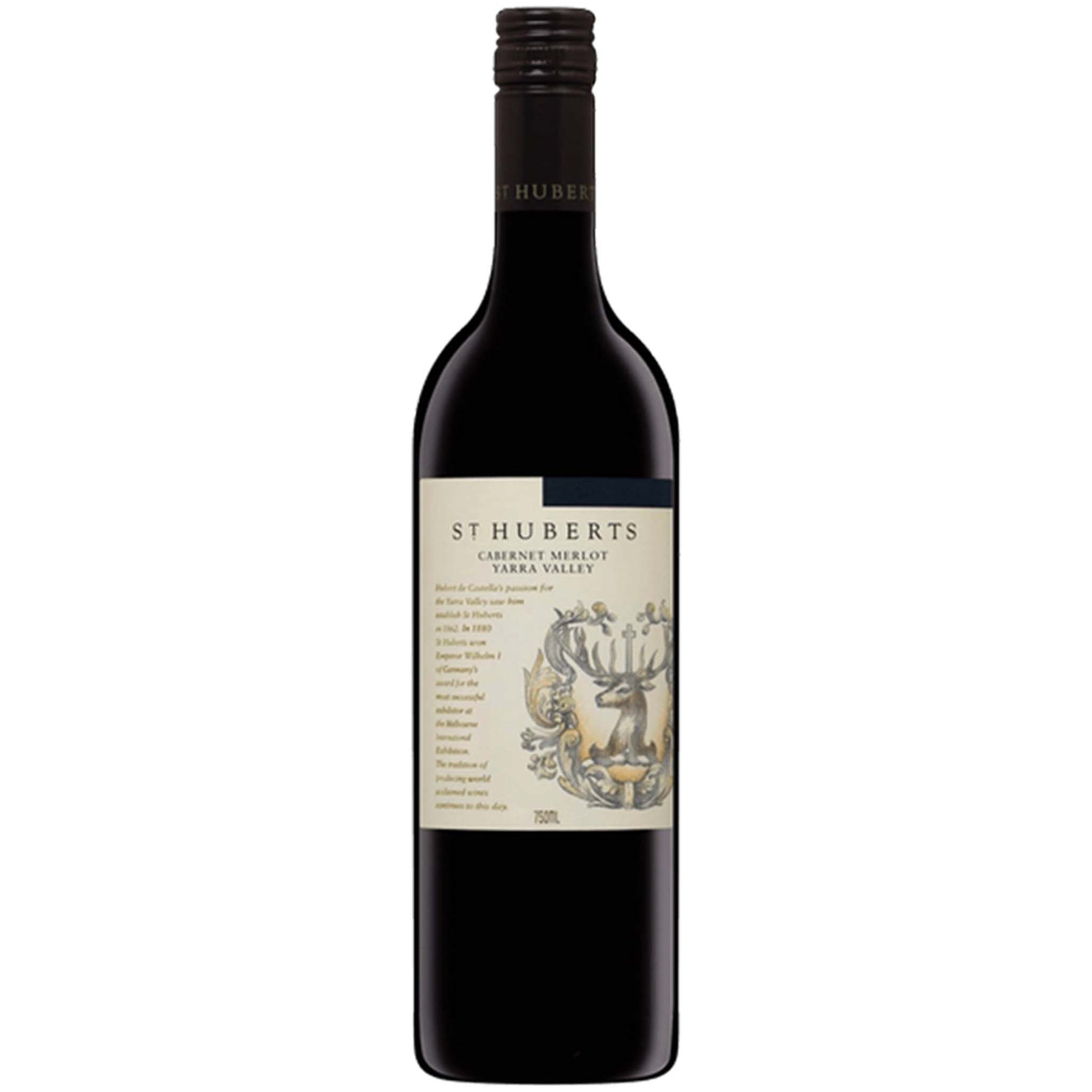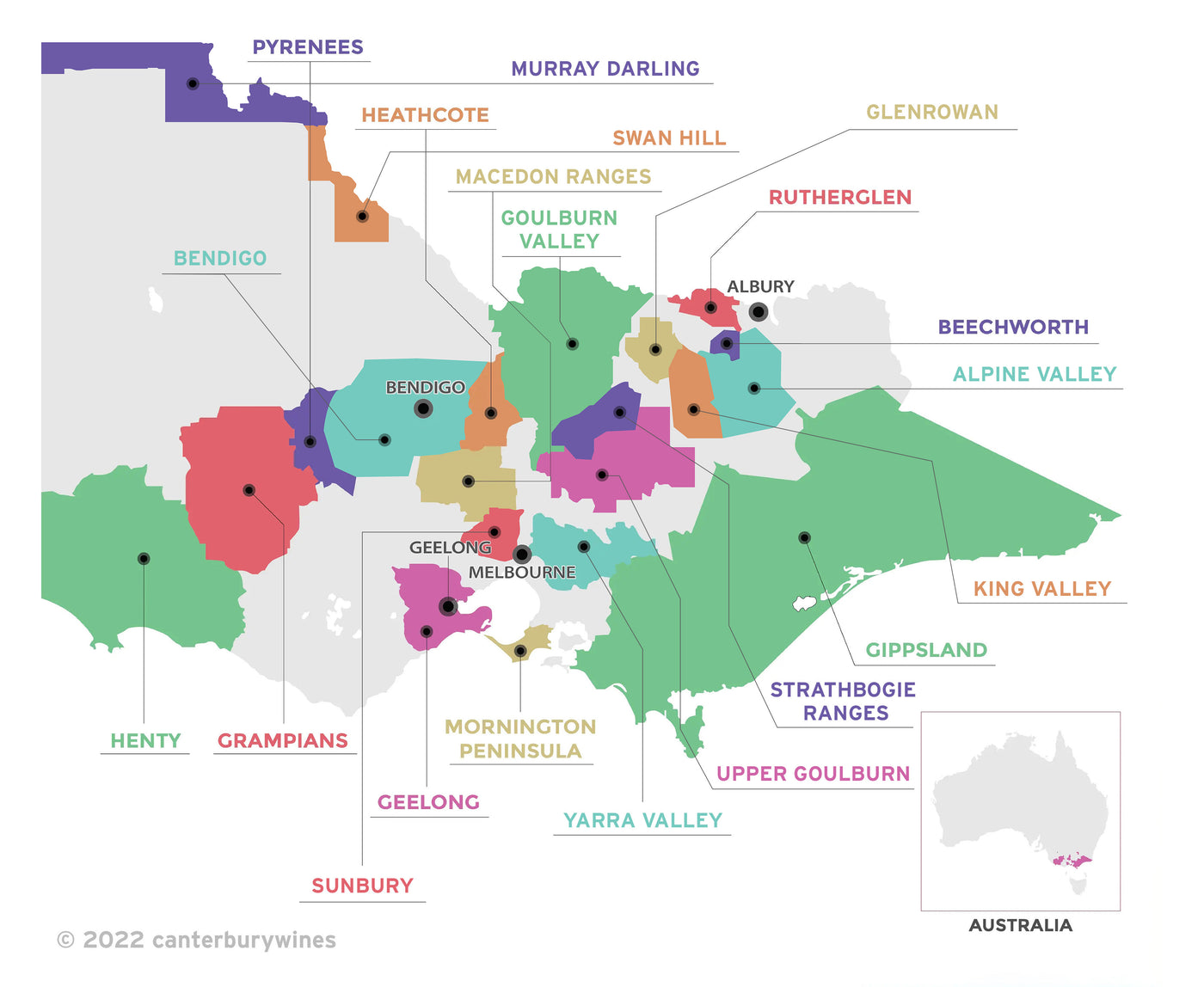

St Huberts Cabernet Merlot 2012
Style: Red Wine
Closure: Screwcap
St Huberts Cabernet Merlot 2012
Warehouse
34 Redland Drive
Vermont VIC 3133
Australia
Critic Score: 93
Alcohol: 13.0%
Size: 750 ml
Drink by: 2032
St Hubert's has a long history of producing outstanding Cabernet Sauvignon and contains some of the oldest Cabernet vines in the Yarra Valley. They also produce a delicious Cabernet Merlot blend, an elegant, subtle, medium -bodied wine with gentle cassis and superfine tannins.
"The fragrant bouquet leads into a juicy palate with cassis and redcurrant fruits to the fore, the herbal nuances of the cabernet neatly balanced by the fleshy red fruits of the merlot. Overall, faultless balance and length." James Halliday
Expert reviews
"Bright hue; the fragrant bouquet leads into a juicy palate with cassis and redcurrant fruits to the fore, the herbal nuances of the cabernet neatly balanced by the fleshy red fruits of the merlot. Overall, faultless balance and length. Drink by 2025." James Halliday, Halliday Wine Companion - 93 points
"Both St Huberts reds, the cabernet merlot and the more expensive cabernet sauvignon, are superb wines and excellent value for money in 2012. Deep red colour with a good purple tint. The bouquet is clean and ripe, fresh and appealing, with dark berry aromas and a touch of cedar from time in good quality oak. The oak is tucked subtly in the background. The palate is medium to full-bodied and smooth, with no sharp edges. A very fine, classy wine with loads of appeal. It will reward cellaring. Drink 2017-2032." Huon Hooke, The Real Review – 93 points
About the winemaker
 Following a Bachelor of Applied Science in Wine at Charles Sturt University and vintage work around Australia and in Bordeaux, Greg Jarratt was appointed Assistant Winemaker and Cellar Hand at Coldstream Hills in the Yarra Valley in 1995 with the esteemed James Halliday as a mentor. During his three-year tenure, Greg went back to Bordeaux in 1996 and then Languedoc-Roussillon working for La Perouse wines in 1997. In 1998, he moved to the Hunter Valley and made wines for Lindeman’s, Tulloch and Hungerford Hill.
Following a Bachelor of Applied Science in Wine at Charles Sturt University and vintage work around Australia and in Bordeaux, Greg Jarratt was appointed Assistant Winemaker and Cellar Hand at Coldstream Hills in the Yarra Valley in 1995 with the esteemed James Halliday as a mentor. During his three-year tenure, Greg went back to Bordeaux in 1996 and then Languedoc-Roussillon working for La Perouse wines in 1997. In 1998, he moved to the Hunter Valley and made wines for Lindeman’s, Tulloch and Hungerford Hill.
Nonetheless, he had developed a taste for the Yarra Valley, so in 2001 Greg returned to Coldstream Hills and in 2006 was appointed Winemaker of St Huberts. Greg is a Len Evans Tutorial scholar, and has been an Associate Judge and Judge at wine shows including the Canberra National Wine Show, the Royal Sydney and the Royal Melbourne Wine Shows.
About the Winery
 St Huberts is located only 45 kilometres east of Melbourne’s CBD in the Yarra Valley, one of Australia’s foremost cool climate wine producing regions. The vineyard and winery is located on the valley floor at the gateway of this beautiful region. At an elevation of 50 to 80 metres, the St Hubert's vineyard sits on a gently sloping site facing north-west, maximising sun exposure and resulting in generous, fuller bodied cool climate wines. Rainfall is slightly winter dominant and around 750 millimetres per annum. The soil is well drained grey clay loam over a clay layer of 500 to 600 millimetres in depth.
St Huberts is located only 45 kilometres east of Melbourne’s CBD in the Yarra Valley, one of Australia’s foremost cool climate wine producing regions. The vineyard and winery is located on the valley floor at the gateway of this beautiful region. At an elevation of 50 to 80 metres, the St Hubert's vineyard sits on a gently sloping site facing north-west, maximising sun exposure and resulting in generous, fuller bodied cool climate wines. Rainfall is slightly winter dominant and around 750 millimetres per annum. The soil is well drained grey clay loam over a clay layer of 500 to 600 millimetres in depth.
St Hubert's was originally founded in 1862 by winemaking pioneer and Swiss immigrant Charles Hubert de Castella, who helped position the region as a premium wine producing area. De Castella named St Hubert's not after himself, but after St Hubert the patron saint of the hunt – a 7th century nobleman who turned his life around after an encounter with a magnificent stag carrying a shining cross between his antlers. In tribute to his patron saint, de Castella decided that the wines of St Hubert's would bear the emblem of the stag with the cross between its antlers, a tradition that continues to this day via the St Hubert's logo.
By 1876 the St Hubert's vineyard was over 80 hectares including 28 hectares of Hermitage (Shiraz), eight hectares of Cabernet Sauvignon and four hectares of Marsanne. By the late 1800s it had grown to be the largest estate in the area. The wines enjoyed immediate and ongoing success at wine shows both domestically and abroad; winning the Emperor of Germany’s Grand Prize at the 1881 Melbourne International Exhibition and a Grand Prix award at the 1889 Paris Exposition – both phenomenal achievements for Australian wine.
The onset of the Great Depression, the increasing popularity of fortified wine and the emerging profitability of dairy farming saw the vineyard revert to grazing in the 1920s, along with all the other vineyards in the Yarra Valley. St Hubert’s was one of the first to replant in 1966, championing the rejuvenation of the Valley as one of Australia’s great cool climate regions. The 1966 vines, the oldest on the property, today yield low crops with intense fruit flavour, depth and concentration.
The St Hubert's legacy continues to this day in the hands of experienced winemaker Greg Jarratt. Greg has led St Hubert's since 2006, working with the vineyard and winery team to honour the high standards set at St Hubert's since its inception over 150 years ago. St Hubert's has a long history of producing outstanding Cabernet Sauvignon and today continues to be lauded for its portfolio of cool climate wines which also include Chardonnay, Pinot Noir and Roussanne. In 2016, they released a single vineyard Blanc de Noir sparkling wine.

Victoria
Victoria is home to more than 800 wineries across 21 wine regions. The regions are Alpine Valley, Beechworth, Bendigo, Geelong, Gippsland, Glenrowan, Goulburn Valley, Grampians, Heathcote, Henty, King Valley, Macedon Ranges, Mornington Peninsula, Murray Darling, Pyrenees, Rutherglen, Strathbogie Ranges, Sunbury, Swan Hill, Upper Goulburn and Yarra Valley.
Victoria's first vines were planted at Yering in the Yarra Valley in 1838. By 1868 over 3,000 acres had been planted in Victoria, establishing Victoria as the premier wine State of the day. Today, the original vineyards planted at Best's Wines are among the oldest and rarest pre-phylloxera plantings in the world.
Victoria's climate varies from hot and dry in the north to cool in the south and each wine region specialises in different varietals. For example, Rutherglen in the north is famous for its opulent Muscats and Topaque and bold reds, while the many cooler climate regions near Melbourne produce world class Chardonnay and pinot Noir. Victoria is truly a wine lover's playground.

